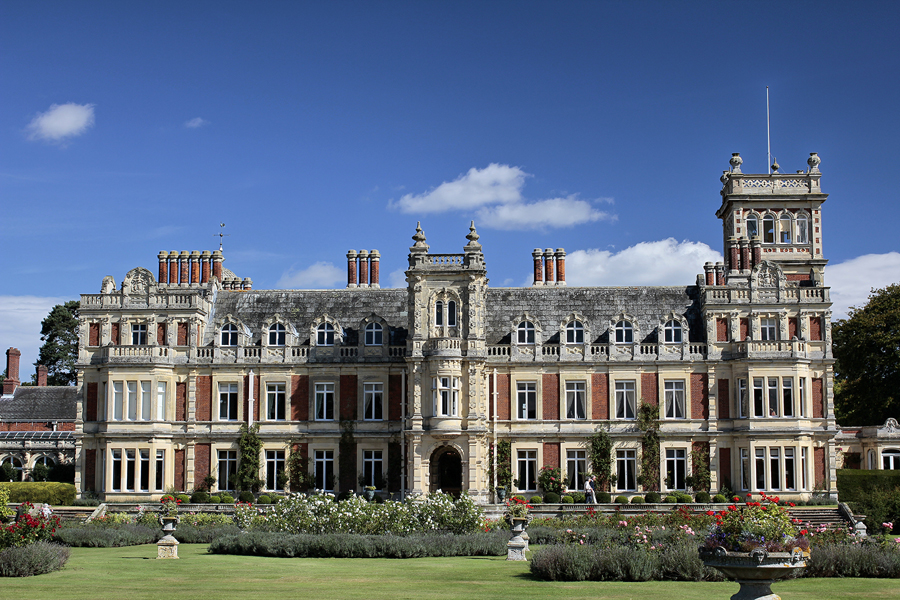 |
| Somerleyton Hall |
 |
| Somerleyton Hall |
Somerleyton Hall estate of 5,000 acres lies five miles NW of Lowestoft near the River Waveney. It is privately run and in addition to welcoming visitors to the hall and gardens is a wedding and corporate event venue. The site is known to have been occupied at least as far back as the Norman Conquest as it is mentioned in the Domesday Book of 1085 as Sumerledetuna. The area was acquired by Peter Fitzosbert having formerly been the property of Ulf. This part of England was settled by the Danes. According to the Wikipedia site, which contradicts the hall's own webpage, Peter Fitzosbert had no male issue but his daughter married into the Jernegan family who continued to hold the estate as Lords of Somerleyton until 1604.
The property was purchased by John Wentworth a lawyer to the aristocrats of East Anglia. He began a major restoration of Somerleyton in the Jacobean style. (James I reigned from 1603-1625). The estate then went to the Garney family and to Admiral Sir Thomas Allin who fought in two sea battles of the Anglo Dutch War at Lowestoft in 1665 and Solebay in 1672. This family died out.
The house was eventually acquired by the wealthy railway pioneer, Sir Samuel Morton Peto (1809-1889) in the 1843. Peto was a partner in Grissel and Peto, a building company that was responsible for The Reform Club, The Lyceum, Nelson's Column and the new Houses of Parliament after the former was burned down. He was also a partner in a second building contractors, Peto and Betts, which built railways. He used John Thomas as architect and Williams Andrews Nesfield as garden designer. During the Crimean War, Peto, Betts and Brassey constructed the Grand Crimean Central Railway between Balaklava and Sevastopol to transport goods to the troop and it was for this achievement that he was created a Baronet. In 1866 the Peto and Betts partnership was dissolved in insolvency partly because of the failure of the bank Overend, Gurney and Company and partly because of the failure of the London, Chatham and Dover Railway.
Peto sold Somerleyton to the carpet magnate Sir Francis Crossley in 1863. Sir Francis' son Savile was created Baron Somerleyton in 1916. The house remains in the Crossley family, whose current head is Hugh Crossley, 4th Baron Somerleyton.
 |
 |
 |
| Gardens | The top of the tower | |
 |
 |
|
| Garden arcade | View down the frontage |
Somerleyton Hall is the only stately home that I have visited that requires visitors to use polythene overshoes. This is an excellent idea as I know that studies by conservationists have shown that the majority of dirt entering a mansion is from the visitors. Shoes carry the heavier particles of dust and grit. Analysis of recovered dust shows that its concentration declines the farther you move from areas walked upon by visitors. The lighter material, which tends to settle higher up on the bookcases and furniture, includes tiny flakes of skin and fibres from clothes!
Somerleyton Hall has its own website.
Wikipedia sites on Somerleyton Hall and Samuel Morton Peto.